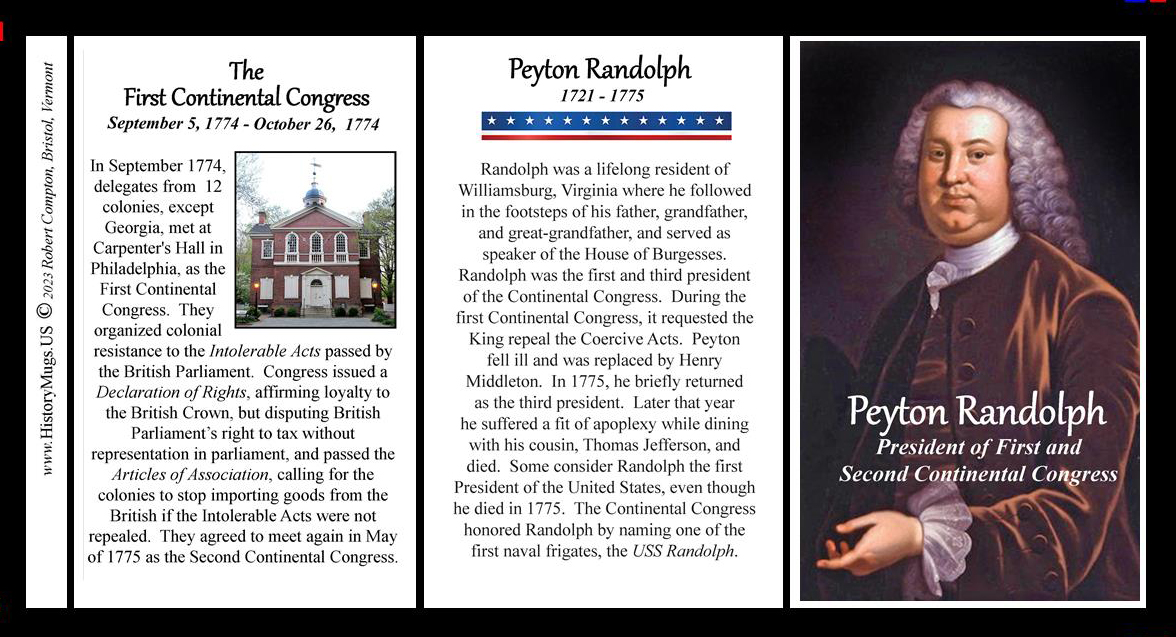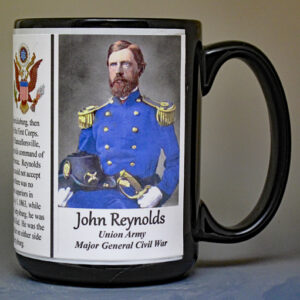Description
Peyton Randolph was a lifelong resident of Williamsburg, Virginia where he followed in the footsteps of his father, grandfather, and great-grandfather, and served as speaker of the House of Burgesses. Randolph was the first and third president of the Continental Congress. During the first Continental Congress, it requested the King repeal the Coercive Acts. Peyton fell ill and was replaced by Henry Middleton. In 1775, he briefly returned as the third president. Later that year he suffered a fit of apoplexy while dining with his cousin, Thomas Jefferson, and died. Some consider Peyton Randolph the first President of the United States, even though he died in 1775. The Continental Congress honored Randolph by naming one of the first naval frigates, the USS Randolph.
The First Continental Congress, September 5, 1774 – October 26, 1774
In September 1774, delegates from 12 colonies, except Georgia, met at Carpenter’s Hall in Philadelphia, as the First Continental Congress. They organized colonial resistance to the Intolerable Acts passed by the British Parliament. Congress issued a Declaration of Rights, affirming loyalty to the British Crown, but disputing the British Parliament’s right to tax without representation in parliament, and passed the Articles of Association, calling for the colonies to stop importing goods from the British if the Intolerable Acts were not repealed. They agreed to meet again in May of 1775 as the Second Continental Congress.
The Second Continental Congress, May 10, 1775 – March 1781
In 1775, the Second Continental Congress professed loyalty to the Crown but took steps to preserve its rights. On June 14, 1775, it created the Continental Army and named George Washington as its commander. In July of 1775, it issued the Declaration of Causes and Necessity of Taking Up Arms. This was coupled with the Olive Branch Petition, which the king dismissed. In July of 1776, the Second Continental Congress passed a resolution asserting independence. In 1777, it drafted the Articles of Confederation, but these were not ratified until 1781. The Articles established the United States as a collection of 13 sovereign states.
The biographical History Mugs were created to teach and inspire individuals to learn about our diverse and interesting history. The biographies were researched and written by history enthusiast, Robert Compton. He colorized most of the historic photos and images used on the mugs, which were originally black and white or sepia-tone. The images and biographies are imprinted on mugs at his studio in rural Vermont.
- Mugs are food and microwave-safe.
- To preserve photographic quality we recommend hand washing.
- Mugs are usually shipped within 3-5 days.










